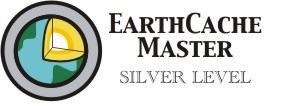



Recently a good friend who lives in the high Andes of Central Peru posted some pictures on Facebook of his climb up to find
Laguna 69 (GC29N6A). After looking them over I knew this would be a great cache and climb to promote on my blog. So give a welcome to
low_rider73 as he describes in his own words his climb to this fabulous earthcache in the Department of Ancash, Peru.
During May and June, I invited a small group of college students down to help me do some research in the Andes Mountains. The team worked hard for 6 weeks gathering data, and so in their final few days in country, we had them come back to our town of Huaraz to enjoy civilization again and to do some excursions before heading back to the States. When asked what they wanted to do, they decided to hike to Laguna 69. I was excited because I don't have many opportunities to get out and hike like that and because I knew that it was an earthcache.
Therefore, on Monday morning, we loaded up in the truck bright and early and headed up to Yungay from Huaraz and took the path up past the Llanganuco lakes. Once we reached the campground beyond Yanganuco, we parked the truck on the side of the road and headed off on what we were told would be a 3 hour hike. Along the way, we past a few waterfalls, crossed a few streams, and climbed a few mountains. Although this Laguna gets a lot of tourism, the trail was in pretty good shape and wasn't trashed (as I expected it to be). After hiking for about an hour and 45 minutes, we thought that we were there, but quickly realized that we had another mountain to climb. After about 2 hours and 15 minutes of hiking, we finally made it. Wow, what an amazing place! The water is this brilliant turquoise color that is absolutely beautiful!
There were 4 of us hiking together and 2 of us made it a little quicker than the others. By time they arrived, Richard and I had decided that the glacier that sits above the lake looked too appealing to pass up. You see, we were told that you couldn't hike to the glacier because it was too far away and too difficult to get there. We decided, however, that it really wasn't that far away and that we were up for the challenge. Therefore, we left the other two behind and set off to touch the glacier. After one failed attempt, we backed down the mountain, regrouped, and headed off again on our second attempt. Fortunately, we picked a better route the second time and we actually reached the glacier for a few photos and such. After spending a few minutes there exploring a little, we headed back down to the lake to meet back up with our friends. Over all, it took about 2.5 hours to climb from the lake to the glacier (with the first time consuming mistake included).
Once we made our way back to the lake, our friends that were waiting on us told us that they decided that they would jump in the lake if we actually made it to the glacier. Therefore, we showed them our pictures as proof and they headed off looking for a private place to change into their swim trunks to take a dip in the freezing cold water. Much to our surprise, they actually jumped in, but it didn't last for long. They came out of the water about as quickly as they went in, but they did it!
After drying off and resting a bit, we all headed back out on the long journey back to the truck. Fortunately, the downhill momentum carried us most of the way, and so the trip back to the truck only took about 1 hour and 15 minutes (we were told that it would take 2 hours). Everything was going well on the trip back to the truck until we made it back to the campground. That was where we faced the final climb to get from the campground up to the truck. Not that it is that bad of a climb, but for the two of us that did all of the extra hiking and climbing, we were beyond exhausted and struggled every bit of the way up that little hill to the truck.
All in all, it was well worth every bit of it! If you are ever in the Huaraz, Peru area and have a day to spare, I highly recommend you taking the time to head up to Laguna 69! You certainly won't be let down by the spectacular view! (And if you want another challenge, climb up to the glacier overlooking the lake - I promise that it is well worth the extra effort!)













